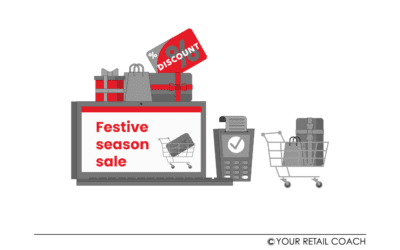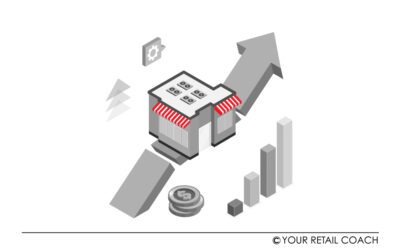Dark Supermarket Business Model
Dark Supermarket Consulting
‘Dark supermarket’ is an amalgamation of retail and eCommerce. These retail businesses sell and deliver to customers via the eCommerce model. Physically, these dark supermarkets exist in the form of warehouses or distribution centres. Not open for customers but customers can make their purchases via online shopping platforms in the form of websites or mobile applications and goods are delivered at their doorstep. Some dark supermarkets also exist in the form of the click-and-collect model.
Areas with a high online purchasing trend provide a solid reason to have dark supermarkets there. For existing supermarkets, it is also a way to bifurcate online and offline sales operations. Because dark supermarkets need not be located in premium areas, the rentals are softer on the budget. There are also savings on interior design and fancy retail things.
The dark supermarket business model can be of two broad types:
- Inventory model
- Marketplace model
1. Inventory Model
In this model, a retail supermarket business operates via the dark supermarket route. This is just like any other supermarket business but done via the dark supermarket route i.e. where you take orders online, process them internally at your warehouse/distribution centre, and home-deliver to customers. The key sources of revenue are margin profits, delivery charges (if applicable), and membership subscription fees.
Website/app Development
For a dark supermarket business, the online store or the online platform whether it is in the form of a website or a mobile application is the face of the business in the absence of any physical store.
The online shopping app/website should be compatible with all operating systems (iOS, Android etc.), be user-friendly and deliver a superior user experience. It should fulfil all the modern-day expectations of customers from an online shopping app or website. Customers need to be able to search for products by filters, find product specifications and prices, product images and videos, access and read product reviews, area delivery details etc.
On the backend side of the platform, there should be a proper order management system in place for receiving and processing orders and for communication with customers in the likes of sending order confirmation notifications, live tracking of their orders, delivery timelines, etc.
Robust Inventory Management
When you are running a dark supermarket business, you do not get the flexibility of a longer supply chain or that of many fulfilment centres. The scope of leniency in demand and sales forecasting is thin. At any given point, your running inventory must commensurate with the running demand for all product variations, sizes, and volumes. At the same time, your storage calculations and purchases have to be precise if you would not prefer stocks to be lying on the floor.
You will need to have strong procurement SOPs and an accurate inventory replenishment system in place. JIT inventory system and material requirement planning could be extremely helpful to optimize the inventory requirements.
Layout Planning and Optimization
The layout of a warehouse plays a decisive role in how inventory is moved which in turn affects the time required for order fulfilment. The layout should be planned and organized in such a way that it optimizes the time required for the movement of inventory to its final checkout. There would be thousands of products in different SKUs, hundreds of shelves and close to as many aisles, multiple storage areas, packaging points, trolleys, etc. If the space layout and the movement of inventory and people are not planned and implemented accordingly, it could result in delays in order fulfilment.
Last-mile Delivery
After the website/app, the last-mile delivery is the second most sensitive customer touchpoint for a dark supermarket business. Even if everything was done right so far, any deviation from the expected or promised standards in the last-mile delivery could be a big turn off for customers. This operation could be carried in-house or by outsourcing it to a third-party logistics or delivery partner. In either case, the standards of service and operations in the last-mile delivery must be clearly established and communicated to the delivery team or the delivery associate entity.
Digital Marketing
Digital marketing for a dark supermarket business is similar to that of any local online B2C enterprise. The target audience here is the local population in the targeted geographic areas. Local business listing on search engines and promoted social media campaigns are effective at reaching out to the local residents. These dark supermarket businesses need to ensure that they have listed multiple working phone numbers, correct website URL, authentic app download link, directional support, device compatibility, etc.
Digital analytics could provide meaningful insights on buying patterns, high demand locations, high demand products and their SKUs, sources of online traffic, conversion rates from the web, app and social media, etc. The effectiveness of conventional marketing also cannot be ruled out here.
SOPs for Order Fulfilment
Process manuals or SOPs are essential for any business including dark supermarket businesses to ensure that its processes and operations are carried out as planned so that the intended operational standards are achieved throughout the order fulfilment process. Right from the moment an order is received to the delivery of the order, all the batches of activities separated by different operations need to be defined and mapped in the form of process manuals or SOPs so that these can serve as operational roadmaps for concerned process or activity owners.
Launch Preparation
This is where the reverse countdown is set for the take-off and the time comes to bring your new dark supermarket business to the light of the day. It is much more than ribbon-cutting. The launch program needs a bit of planning and marketing efforts. The first impression should be a lasting one and to make sure it happens, there are a host of activities like a trial run of the website (preceded by beta testing), the onset of digital marketing campaigns, print media advertising campaigns, promotional pricing, etc. The idea here is to impress stakeholders, strike digital visibility, and make the business presence felt from the word go.
Responsive and Effective Customer Support
The truth is most businesses miserably fail at customer support.
An order value of INR 100 is as important as an order value of INR 1,000. The statistical science we follow here falls a bit flat. A customer with a smaller bill could be your next big customer or could bring ten more. Most business owners fail to send that simple message across to their frontline or delivery staff.
Customers nowadays expect real-time order details to be made available to them with fewer taps or clicks. The shopping web or app must provide for it. Customers may even seek to change their payment mode at the time of delivery. These kinds of automated self-service features have become the norm of the day.
For manual support, customer service representatives should be guided by SOPs. These frontline staff should not appear confused or appear to be routing customers.
2. Marketplace Model
In the marketplace model, you provide a marketplace platform to the retailers who serve as the suppliers post registering with your business. After receiving customer orders, you pick up the goods from these retailers and deliver the order to the customers. It is similar to what popular eCommerce marketplaces do but dark supermarkets operate at the local level. In this model, the key sources of revenue are sale commission from retailers, delivery charges from customers, and advertising and promotion.
Merchant Onboarding Process
The process of on-boarding a new merchant can entail a wide range of activities like scrutinizing applications, documentation formalities, physical verification, registration fees (if any), acquainting the merchants about the applicable policies, terms and conditions, operational standards to be maintained, the processes and procedures for order processing, etc. Different companies may have different approaches to how they carry out this onboarding process. Having SOPs can simplify a complex and lengthy onboarding process. A well-planned, systematic, and process-oriented approach will ensure that all the required areas of work are duly undertaken and finished on time.
Merchant SOPs (order processing)
Merchant retailers need to be well-acquainted with the order processing part. They should know their role and the activities to be undertaken by them in the order fulfilment process right from the moment an order is sent to them to getting the order ready for pickup and delivery by the logistics team. At every step in this process, they need to maintain the established standards of performance.
Merchant Training
As a marketplace platform, it is your business prerogative to help your merchant partners get acquainted with the policies, order fulfilment process and standards of performance you want them to imbibe. You will have to bear in mind that your team and your merchant partners are going to work remotely. If there are any gaps in understanding policy, process or procedure or any step thereof, it might be more convenient to fill such gaps with unapproved patchwork or out-of-the-book decisions.
With relevant training and SOPs, such deviations can be eliminated. And more than that, merchant partners will have a better understanding of the policies and processes and the standards of performance to be maintained in a win-win situation.
CRM for Merchants and Customers
Customers and merchant partners are two important external stakeholders for a marketplace business enterprise. You are providing services to both. If anything is out of the place in the service model, they will come back to you for assistance or queries. You will need to address their concerns and grievances in a responsive, speedy, and effective manner. Hence, the need for a robust CRM arises. Similar to CRM support in the inventory model, customer service representatives should be guided by SOPs aided by CRM software.
Audit
You should ensure if your merchant partners are consistently abiding by the agreed terms of performance in terms of the quality of goods, storage conditions, order accuracy, packaging standards, adherence to SOPs, safe and hygienic working conditions, updated trade license, etc. All these can be assessed with the help of audits. Customer feedback and reviews are an important consideration in audits. These audits are important because it has ramifications on your brand. The burden of such operational audits can be significantly reduced if there is a robust IT platform in place where real-time activities can be tracked and overall merchant performances can be checked any time on the system. The scope of audit also extends to your internal business functions like HR, finance, marketing, logistics, etc.
Get Advice for Dark Supermarket
Related Blogs
Making the most out of the festive season shopping: A Customer Perspective for Retailers
Decoding the Festive Shopping Spree For us, as customers, the festive season is a licence to spend. The vibes of festivity ushers with joy and a sense of celebration. This elevated mood often turns into an enhanced willingness to spend and indulge in shopping. It is a...
Mitigating Business Risks in Retail
Spotting the Swirls Sailing the stream of retail is canopying between opportunities on the surface and risks as the current of that stream. If the bad swirls are not spotted in advance, it can turn things undesirable. While big brands grapple with issues like lapses...
How Retailers are Enhancing Customer Experience (CX) with Hyper-Localisation
Hyper-localisation is an alignment strategy that helps retail brands and businesses mould into the requirements of a locality-based market environment. Marketing-wise, it helps retailers tailor their value propositions to cover the needs and expectations of highly...





We work only for Visionaries.